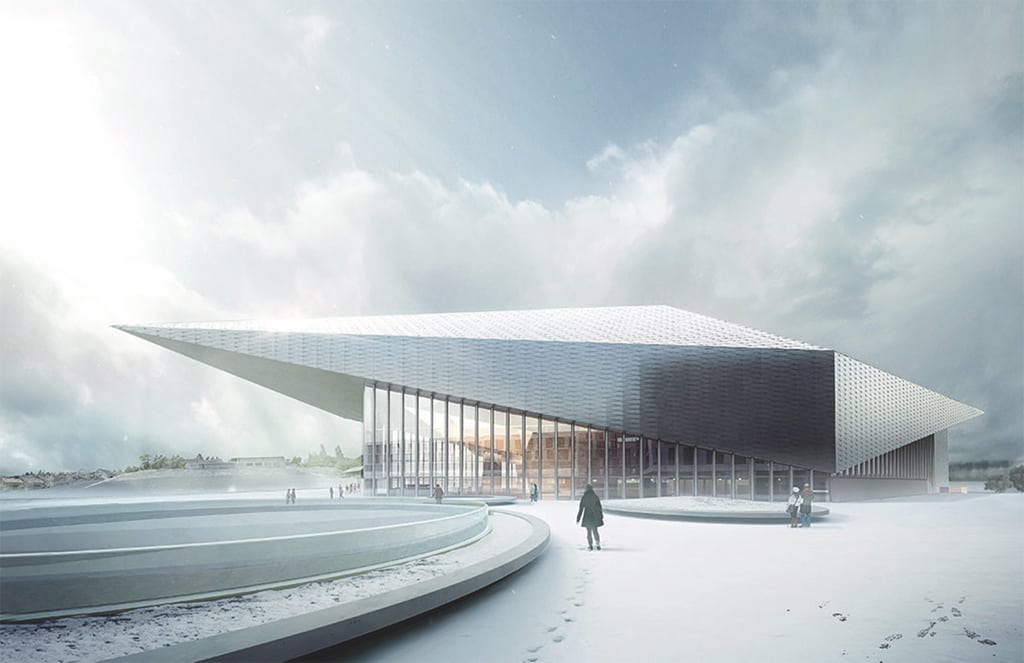Skift Take
The push for more high-tech, design-conscious convention centers is becoming a competitive advantage for cities going after high-tech, design-conscious delegations.
You have to be a hardcore meetings and convention industry fan to get super excited about high-tech, ultra-fashionable convention centers, although there are a lot of us in the industry out there.
Other types of civic facilities designed for large audiences—from Charles Garnier’s Paris Opera to Frank Gehry’s Disney Concert Hall in L.A.—have long attracted architecture’s elite, who use these grand venues to establish their legacies among the world’s pantheon of urban design luminaries.
Convention centers, meanwhile, not so much. They typically have never attracted the same public adoration or the financial resources from city coffers to be considered truly visionary buildings. Many times, it’s just the opposite.
The year-old Qatar Convention Center and Zaha Hadid’s mixed-use Dongdaemun Design Park in Seoul are pushing forward a few new aesthetic ideas, but there has been relatively little evolution in terms of user experience.
That’s changing. Last month, the new $255 million Swiss Tech Convention Center opened in Lausanne, Switzerland with an aggressive knife-edge wedge profile designed like the facets of a diamond. It anchors the heart of the city’s “Innovation Square” and Polytechnic School of Lausanne (EPFL), located on Lake Geneva 40 minutes east of the city of Geneva.
The big news that has convention planners going all ga-ga globally is the futuristic convertible seating arrangement. For the non-meeting industry layman, that might not seem like a huge deal. But since the beginning of time, conference planners have always craved the ability to use spaces for different purposes over the duration of a program.
Watch the video beginning at the 2:00 mark when the auditorium begins to shift from a tiered seating arrangement to a flat ballroom floor. The transformation is driven by proprietary GALA Systems technology developed in Quebec, whereby the floor opens up and mechanical arms lift the chairs into the air so they can flip down under the floor. The entire process takes about 15 minutes.
For background music to match the techno wizardry, the video animation creators chose the pumping, orchestral “Chasing Jonas Skarssen” from The International movie soundtrack.
“The 1,000-ton metallic titan holds a 3,000‐seat amphitheater that is fully modular, and as such, it will become a smart conferencing lab aimed at developing new tools for sharing scientific knowledge,” says Olivier Mathieu, congress/meetings manager at Lausanne Tourisme. “The Swiss Tech Convention Center is also the first large scale convention hall to use dye-sensitized solar cells, called ‘Grätzel cells,’ [partially] developed at EPFL.”
Grätzel cells use dye to convert electricity similar to the principle of chlorophyll photosynthesis in plants, making it less expensive and more flexible than silicon panels.
Designed by Richter & Dahl Rocha Architects, based in Buenos Aires and Lausanne, the Swiss Tech Convention Center is one of the only international convention centers located directly on a large scientific campus. Other academic institutions nearby include the Rolex Learning Center and The Olympic Museum, which reopened last December following a two-year renovation.
For onsite accommodations, the 66-room SwissTech Hotel is equally fresh and modern with Google Map-emblazoned artwork on the guest room walls. And presently undergoing a $140 million restoration to its 1909 bones, the Art Nouveau-style Royal Savoy Lausanne opens in June next year.
Greg Oates covers hotel/tourism development and travel brand media. He has toured over 1,000 hotels in 50+ countries. email / twitter
Have a confidential tip for Skift? Get in touch
Tags: meetings and events
Photo credit: Rendering of Swiss Tech Convention Center Lausanne Tourisme

